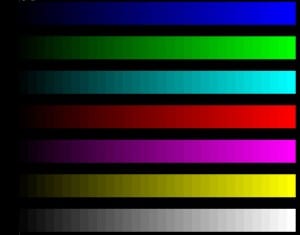There are many reasons why you should have your monitors calibrated when working with digital photography. One main reason is to ensure that the colors you are editing are truly the colors in the picture and not what you are seeing on your un-calibrated monitor. Another reason is to ensure your monitor matches the print you will receive. Another reason to consider monitor calibration is to ensure the viewer is seeing exactly what you want them to see in the image. Granted that relies heavily on their monitor being calibrated as well. I know there have been times when I edit an image at home, upload it to my site, and show someone at work and notice that the picture looks nothing like it did at home. On my personal monitor the reds were vibrant with subtle hints of contrast, but at work the reds were somewhat washed out with horrible light to dark contrast. Whose monitor is calibrated mine or the monitor at work?
There are many avenues you can take when calibrating your monitor. Some cost a small fortune, while others are free. If you want to spend a pretty penny, but ensure you have a calibrated monitor, you can go with the Spyder series calibrators. I do not know much about the Spyder series calibrators, nor have I ever used one, but the reviews are pretty good. I think they may be a little high speed for me at the moment. I do not do any of my own printing so the Spyder is not necessarily for me. When I get to that point I am sure I will be using it. On much the cheaper side, if you use Mpix for your printing, they offer a $3 calibration kit. With this kit you calibrate your monitor to the print they send.
For the time being, I decided to venture out to find free methods of monitor calibration. There are several online calibrators that are extremely helpful. I recently used The LCD Monitor test and the Online Monitor Test. I found that one of my monitors was way off on the white scale with a high amount of blue present. Now I may not be as calibrated as I should be, but at least now I have some piece of mind about where my monitors rank with the online monitor tests.









